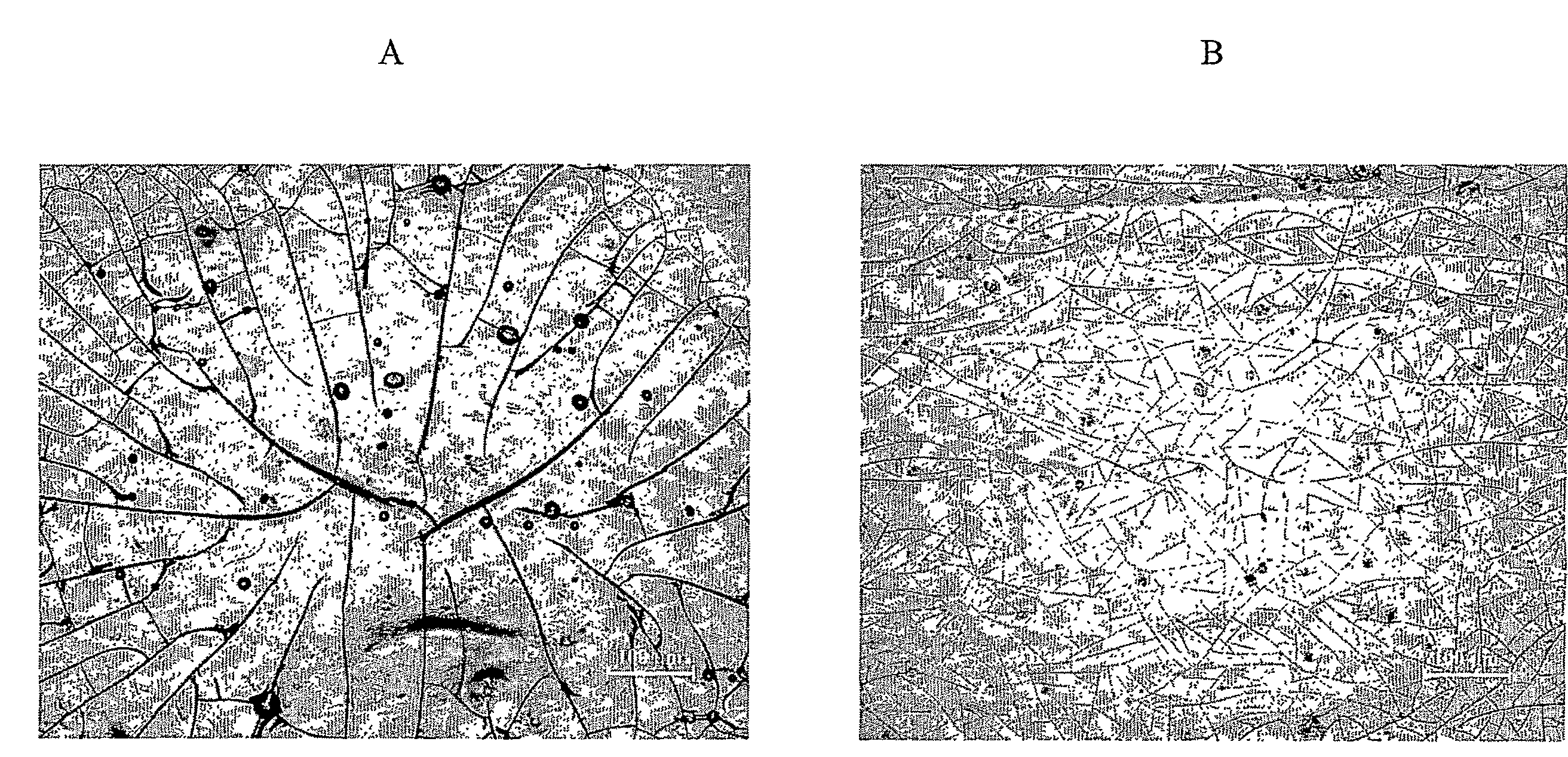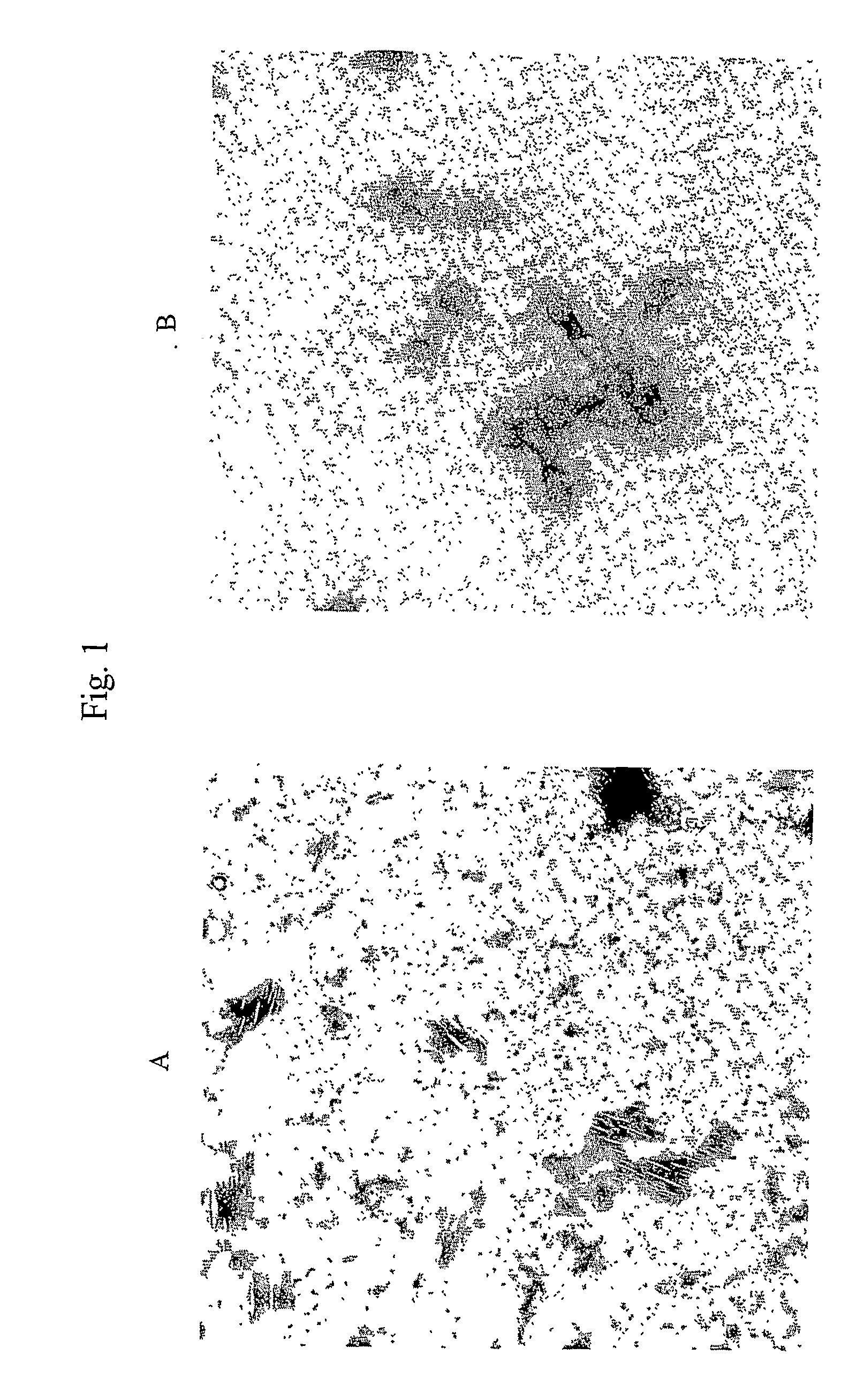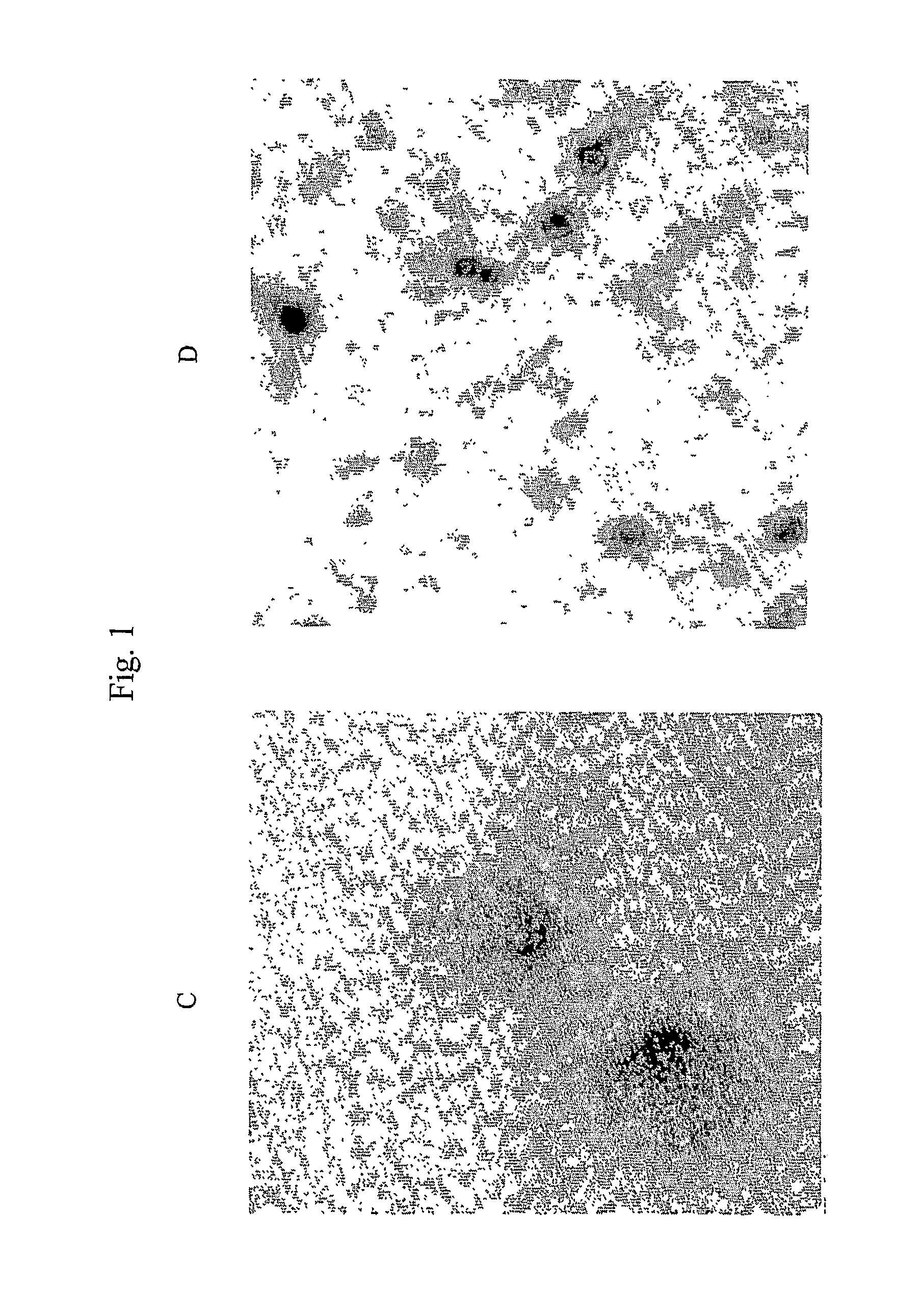Latex Adhesives Derived From Ionic Strength Induced Soy Protein Complexes
a soy protein complex and ionic strength technology, applied in the field of protein polymers and biobased adhesives, to achieve the effects of sufficient gluing strength, microwave curability, and convenient manipulation
- Summary
- Abstract
- Description
- Claims
- Application Information
AI Technical Summary
Benefits of technology
Problems solved by technology
Method used
Image
Examples
example 1
[0091]This Example describes SAIPP as latex-like adhesives prepared from soy protein isolates containing 2-mercapto-ethanol.
Adhesive Preparation
[0092]About 50 g of soy flour (Cargill) was added to 800 ml of distilled water (about 1:15 to 1:20 ratio) and stirred until the flour was completely dissolved. About 18 drops of 2-mercapto-ethanol (2ME) (at about 0.01 to 0.02 m-mole / 50 g soy flour ratio) was added to the soy-flour mixture and stirred for a few minutes. The pH of the mixture was then adjusted to 7.6 by stirring in 1 N NaOH for 120 minutes. The mixture was centrifuged at 4° C. and 12,000 g for 20 minutes to remove all carbohydrates that had precipitated. NaHSO3 (sodium bisulfite in solid form) was added to the supernatant at 1.01 g / L based on the supernatant solution, and the pH of the solution was adjusted to 4.5 by stirring in 2N HCl for a few minutes and then storing the solution at 4° C. for 24 hours. The sample was centrifuged at 4° C. and 12,000 g for 20 minutes. The sup...
example 2
[0094]This Example describes SAIPP in liquid forms as latex-like adhesives prepared from soy protein containing 2-mercapto-ethanol.
Adhesive Preparation
[0095]About 50 g soy flour (Cargill) was added to 800 ml distill water (about 1:15 to 1:20 ratio) and stirred in general until the dry flour was completely dissolved. About 18 drops 2-mercapto-ethanol (2ME) (at about 0.01 to 0.02 mMole / 50 g soy flour ratio) was added into the soy flour-water mixture and stirred for a few minutes. The pH of the mixture was then adjusted to 7.6 by stirring in 1 N NaOH for 120 minutes. The mixture was centrifuged at 4° C. and 12,000 g for 20 minutes to remove all carbohydrates that had precipitated. NaHSO3 was added to the supernatant at 1.01 g / L based on the supernatant solution, and the pH of the solution was adjusted to 6.4 by stirring in 2 N HCl for a few minutes and then storing the solution at 4° C. for 24 hours. The sample was centrifuged at 4° C. and 12,000 g for 20 minutes. The supernatant was d...
example 3
[0097]This Example describes SAIPP in liquid form as latex-like adhesives prepared from soy protein containing 2-mercapto-ethanol.
Adhesive Preparation
[0098]The ionic strength of the discarded supernatant from Example 2 was further adjusted with NaCl at 0.25 g / L based on the supernatant solution, and then the pH of the mixture was adjusted to 5.0 using 2N HCl. The sample was stored at 4° C. for 2 hours and then centrifuged at 4° C. and 12,000 g for 20 minutes to remove all glycinin residual. The ionic strength of the sample was reduced by adding distilled water at twice the volume of the supernatant solution. The pH of the sample was adjusted to 4.8 with 2 N HCl and stored at 4° C. for 24 hours, and then the sample was centrifuged at 4° C., 12,000 g for 20 minutes. The precipitation was saved as the ion treated soy protein conglycinin adhesive.
Adhesive Performance
[0099]The adhesive was a light yellowish color with a strong odor due to the 2ME and excellent flowability and cohesivenes...
PUM
| Property | Measurement | Unit |
|---|---|---|
| temperatures | aaaaa | aaaaa |
| molecular weight | aaaaa | aaaaa |
| MW | aaaaa | aaaaa |
Abstract
Description
Claims
Application Information
 Login to View More
Login to View More - R&D
- Intellectual Property
- Life Sciences
- Materials
- Tech Scout
- Unparalleled Data Quality
- Higher Quality Content
- 60% Fewer Hallucinations
Browse by: Latest US Patents, China's latest patents, Technical Efficacy Thesaurus, Application Domain, Technology Topic, Popular Technical Reports.
© 2025 PatSnap. All rights reserved.Legal|Privacy policy|Modern Slavery Act Transparency Statement|Sitemap|About US| Contact US: help@patsnap.com



